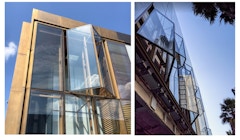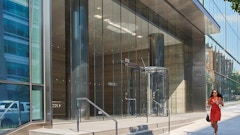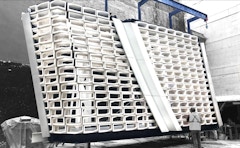
Lightweight Veneer in High-rise Unitized Facades
Manufactured veneer panels such as glass fiber reinforced concrete (GFRC), ultra high performance concrete (UHPC), sintered stone, and terracotta are

Manufactured veneer panels such as glass fiber reinforced concrete (GFRC), ultra high performance concrete (UHPC), sintered stone, and terracotta are

As the first phase of a $4 billion dollar, 180-acre, 60 building government preservation project in Washington DC, this case study reviews the

Green Wall applications are growing in popularity around the world. Often thought of as a decorative element they provide much more than aesthetic

Silicone materials have a long history in high performance building projects. Known for durability, they can reduce a building’s carbon footprint by

This article discusses design, prototype development and a simulation study of novel types of facade systems, which integrate thermoelectric (TE)

Until recently, Google has occupied buildings that were designed for others and modified the interiors to suit its needs. Many of the improvements

Contemporary building practice represents a disconnect between traditional manufacturing techniques, that favor straight runs and orthogonal

ASTM E 1300 Standard Practice for Determining Load Resistance (LR) of Glass in Buildings defines the load resistance of a glass construction as being

What was once an accepted reality in heat-treated exterior glass, optical disturbances in glass are under increasing scrutiny by developers,


Fidelity between the built enclosure and early visualizations is rarely, if ever, an accident. When achieved, it comes as the result of persistent

The design of structural glass systems continues to evolve with the parallel development of new manufacturing technology. Improvements in the

The project described in this paper explores the integration of custom-made soft robotic muscles into a component-based surface. This project is part

This case study focuses on the solutions provided for the Bell Museum at the University of Minnesota. Our design team worked with the client to

Computer simulations of an automated dynamic facade in a passively heated and cooled building by using predictive modeling of short-term future

Apertures is a six-story, commercial building in the Roma Norte neighborhood of Mexico City–a neighborhood severely impacted by the 1985 and 2017

With net zero and carbon neutral mandates on the near horizon, New York City has pushed the green building envelope by leveraging incentive-based

With an ever-growing interest in mid- and high-rise mass timber construction, this paper highlights the insights and lessons learned across global

This paper examines two profoundly different design approaches: one, herein called ‘autonomous’, where the building’s design is governed by internal

This paper will explore steel forming methods other than cold drawn or hot rolled processes, and how they allow steel to be utilized as the primary